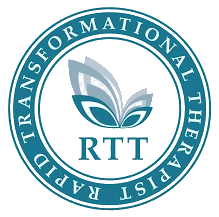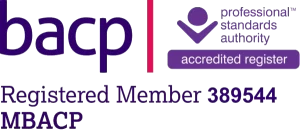Could Your Mindset Be the Missing Piece to Achieving Your Goals?
Could Your Mindset Be the Missing Piece to Achieving Your Goals?
We all start new chapters in life with a sense of motivation and purpose, ready to make changes that matter. But over time, it’s easy to feel stuck or lose focus. Achieving what you want isn’t about willpower, it’s about mindset. Whether you’re working toward career goals, creating balance in family life, or focusing on your own wellbeing, the way you think shapes everything you achieve.
Our mindset is influenced by beliefs we’ve carried since childhood. From an early age, our subconscious absorbs messages and experiences that shape how we view ourselves and the world. For example, if you grew up hearing, “You’re not good at sports,” that belief may linger and make you hesitant to try new things as an adult. The powerful truth is that your brain will believe what you repeatedly tell it.
The good news is that mindset isn’t fixed. By aligning your thoughts, emotions, and actions, you can unlock confidence, motivation, and clarity to help you move forward and achieve your goals.

What Is Mindset and Why Does It Matter?
Mindset is the set of beliefs and attitudes you hold about yourself and your abilities. These beliefs shape every decision you make and every action you take.
Psychologist Carol Dweck introduced the concepts of a fixed mindset and a growth mindset:
- Fixed Mindset: Believing abilities are static, which can lead to avoiding challenges and fearing failure.
- Growth Mindset: Believing abilities can grow with effort, encouraging resilience and learning from setbacks.
For example, imagine starting a new fitness routine. A fixed mindset might say, “I’ll never get fit,” while a growth mindset reframes this as, “I can improve my fitness with consistent effort.”
Your mindset doesn’t just affect your decisions, it also influences the energy you put out into the world.
What Is Vibrational Energy?
All energy vibrates, including your thoughts and feelings. When we project those vibrations into the world, they influence what we attract back. This is often referred to as vibrational energy.
Have you ever met someone who gave off a bad vibe? Maybe they didn’t say much, but their negative energy was palpable. On the other hand, someone confident and positive can light up a room.
Vibrational energy plays a key role in manifestation. Aligning your thoughts, emotions, and actions to your goals, creates a kind of momentum that attracts opportunities and opens doors.
Think about how you feel when you walk into a meeting prepared and confident, people notice that energy, and it helps you connect and leave a positive impression. On the flip side, if you walk in feeling unsure or doubting yourself, it can be harder to engage and get the results you want. The energy you bring into a situation often shapes what you get out of it.
Manifestation: Aligning Your Mindset and Energy
Manifestation is about bringing your goals and dreams to life by aligning your thoughts, feelings, and actions with what you want to achieve. Manifestation is not about “thinking positive” and then sitting back and hoping for the best, it’s about believing in yourself, having a clear vision, and taking steady steps toward making it happen.
For instance, when you truly believe, “I’m capable of success,” you start to make decisions and notice opportunities that align with that belief. After a while, this starts to build momentum, making it easier to move toward your goals.
But we’ve all had moments when self-doubt or fear creeps in, haven’t we? Those thoughts can feel like roadblocks, slowing you down or holding you back. Think of it like tuning a radio, when your energy is focused on gratitude and positivity, you’re more likely to connect with experiences and people that help you succeed.
Manifestation isn’t just about thinking positive; it’s about directing your energy and actions in a way that turns your intentions into reality.
Shifting Your Mindset: Practical Steps
Shifting your mindset doesn’t happen overnight. The mind responds to repetition, and small consistent steps that build up over time.
These small shifts can make a big difference. Here are some ideas to help you get started:
Awareness
- Start by noticing the stories you tell yourself. Are they helping you move forward, or are they holding you back? For example, if you often think, “I’m not good enough,” that’s a belief worth challenging. Journalling regularly can help you spot patterns that need a fresh perspective.
Gratitude Practice
- Take a moment each day to focus on three things that you are grateful for. It could be something small, like the taste of your morning coffee, a kind word from a colleague, or ticking off a task from your to-do list. Gratitude helps shift your energy from “I don’t have enough” to “There’s so much to appreciate.”
Affirmations
- Replace those limiting beliefs with more empowering ones by changing the statements or stories you tell yourself. For example, when you catch yourself saying, “I’ll never figure this out,” try telling yourself, “I’m learning and improving every day.” Over time, these small changes in language can help reshape the way you see yourself.
Visualisation
- Take a few minutes each day to imagine yourself achieving your goals. Picture the details, what it looks like, how you’ll feel, and the pride that comes with it. Let that vision keep you motivated and guide the steps you take.

Inspired Action
- Big goals can feel overwhelming, so break them into smaller, doable steps. For example, if you’re working toward a promotion, focus on things like updating your CV, completing a course, or seeking feedback from a mentor. Don’t forget to celebrate each milestone, every small win counts.
Meditation and Mindfulness
- Sometimes, all you need is a few quiet moments to reconnect with yourself. Meditation or mindfulness exercises can help you clear your mind and tune into what really matters. Even five minutes can make a difference.
How RTT Supports Mindset and Manifestation
Sometimes, our subconscious beliefs can hold us back without us even realising it. Rapid Transformational Therapy (RTT) is a powerful tool for uncovering and rewriting those limiting beliefs.
For example, one client I worked with struggled with procrastination. Through RTT, we discovered their hesitation came from a belief rooted in childhood, that success would create conflict with their sibling. By reframing that belief, they felt motivated and free to pursue their goals.
RTT helps you:
- Release Limiting Beliefs: Let go of thoughts like “Success isn’t for me.”
- Reinforce Empowering Beliefs: Build confidence and clarity to take action.
- Elevate Your Energy: Replace negativity with empowering beliefs that attract opportunities.
Your Mindset Shapes Your Success
Your mindset and energy are the foundation of everything you achieve. They influence how you approach challenges, adapt to setbacks, and stay motivated.
Take a moment to reflect: What’s one belief you’re ready to let go of, and what’s one new belief you want to embrace?
If you’d like to explore these ideas further, you can find a range of resources to support mindset and motivation, including RTT recordings here at Clear Haven Therapy, and ADHD-friendly tools and courses on my sister site, The ADHD Coaching Room. Both are designed to help you move forward with clarity, confidence, and a renewed sense of focus.









